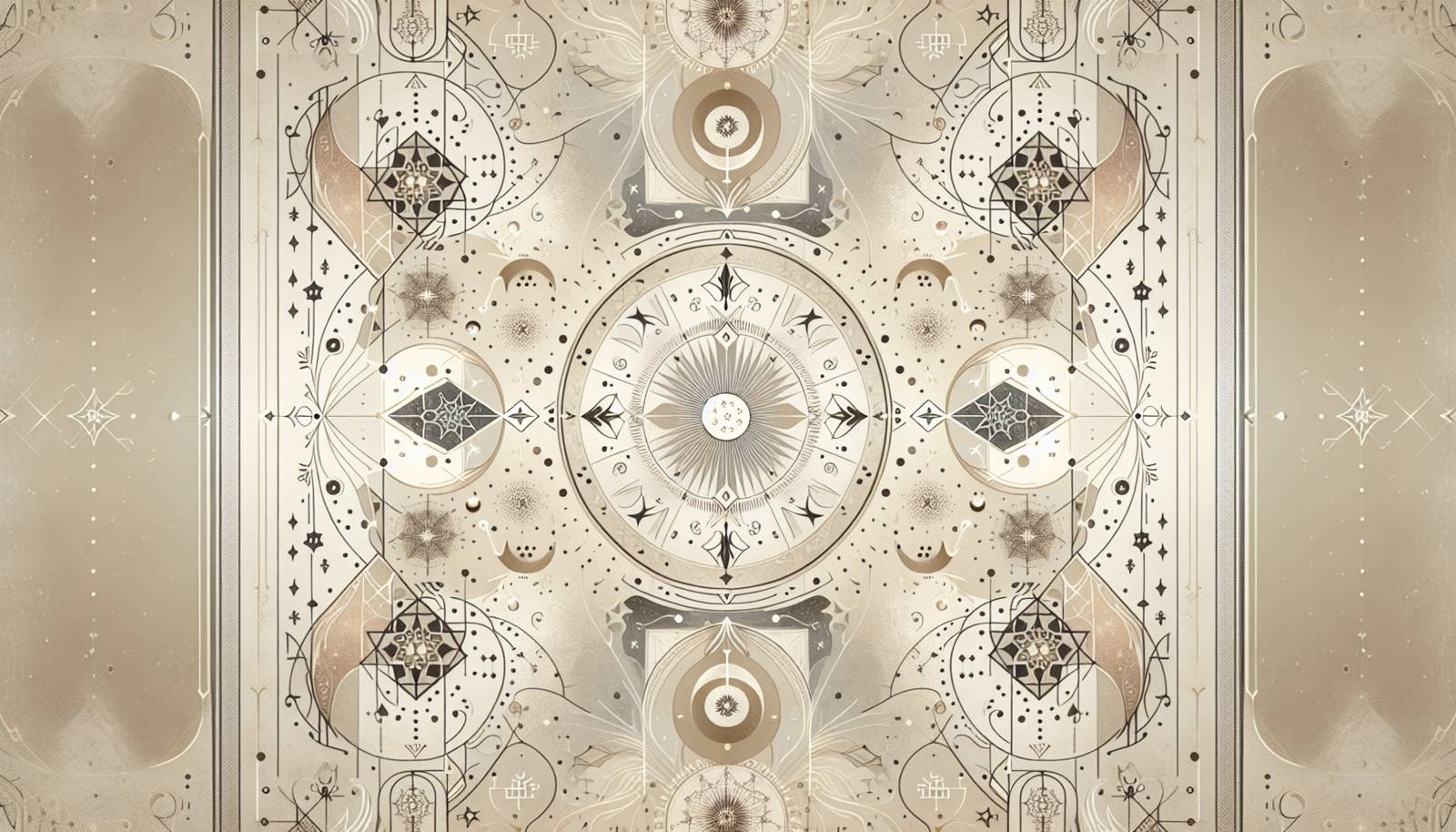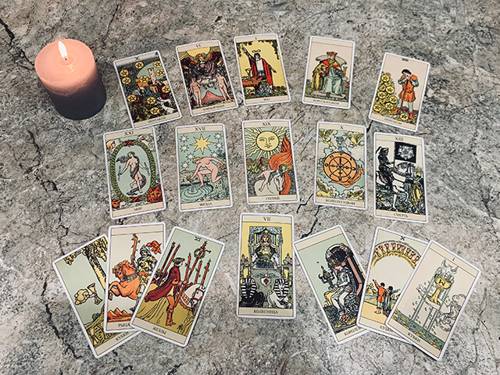
FAQ About The Role of Tarot in Contemporary Culture

What are tarot cards and what is their origin?
Tarot cards are a deck of 78 cards used for divination, storytelling, and meditation. The deck consists of 22 Major Arcana cards representing significant life themes, and 56 Minor Arcana cards divided into four suits. Tarot's origins date back to the mid-15th century in Europe, originally devised for gaming. It wasn't until the late 18th century that tarot cards began gaining popularity for divination and esoteric uses.

How have tarot cards influenced contemporary art?
Tarot cards have had a substantial impact on contemporary art by inspiring artists with their rich symbolism and imagery. Many contemporary artists incorporate tarot iconography in their work to explore themes of spirituality, destiny, and personal transformation. Artists like Salvador Dalí and others have even created their own tarot decks, integrating their unique style with traditional tarot themes.

In what ways are tarot cards used in pop culture?
Tarot cards appear frequently in pop culture, from movies and TV shows to music and literature. They are often used as plot devices to foreshadow events or develop character arcs. Tarot decks are also featured in various merchandise, reflecting their influence on fashion and design. Popular shows like 'Chilling Adventures of Sabrina' and 'Penny Dreadful' have included tarot reading scenes, illustrating the cards' mystique and storytelling potential.

Can tarot cards provide meaningful personal insights?
Many people use tarot cards as a tool for personal exploration and self-reflection. By interpreting the cards' symbols and meanings, individuals may gain new perspectives on their personal challenges or life path. The process of reading tarot can promote introspection, encouraging users to consider their emotions, circumstances, and decisions more deeply.

What is the symbolism associated with tarot cards?
Each tarot card is rich in symbolism, derived from a blend of mythology, astrology, numerology, and religious imagery. The Major Arcana cards represent fundamental spiritual lessons and transformations, while the Minor Arcana cards reflect daily life experiences. Symbols within tarot often include archetypal figures, elements of nature, and other exotically suggestive visual themes that prompt intuitive interpretation.

How has modern storytelling incorporated tarot themes?
Modern storytelling often incorporates tarot themes by using the cards' archetypes and narrative structures to develop characters and plots. Writers and creators borrow from tarot's themes of fate, transformation, and duality to craft rich, symbolic narratives. Books, films, and plays sometimes mirror the structure of a tarot reading, where each section or act represents a different card's meaning.

What misconceptions exist about tarot?
Common misconceptions about tarot include the belief that it predicts the future with certainty or is inherently linked to supernatural forces. In reality, tarot is more about guidance and reflection rather than prediction. It provides a framework for understanding one's current situation and exploring possible outcomes based on intuition and insight rather than predetermined fate.

Are there different types of tarot decks used today?
Yes, there are numerous types of tarot decks available, each with unique artistic styles and interpretations. The most commonly used decks are the Rider-Waite-Smith and Thoth decks, known for their distinct imagery and meanings. Additionally, many artists and creators design modern decks that reflect cultural diversity, esoteric traditions, and contemporary themes.

How do people typically learn to read tarot cards?
People typically learn to read tarot cards by studying books, taking courses, or engaging with online resources that explain the meanings of each card and the variety of spreads used in readings. Practice and intuition play significant roles, as readers learn to interpret combinations of cards and their positions during readings. Many readers also emphasize the importance of developing a personal connection to the deck.

What role do tarot cards play in personal rituals?
Tarot cards often feature in personal rituals focused on meditation, intention-setting, and spiritual exploration. Individuals might draw a card daily for guidance, use tarot spreads to navigate specific life questions, or include tarot readings in larger spiritual practices. These personal rituals help users reflect on their journey, set goals, and make intentional changes.

How are tarot cards perceived in different cultures?
Perceptions of tarot cards vary widely across different cultures. In some societies, tarot is embraced as a legitimate form of self-exploration and spiritual guidance, while in others it may be associated with superstition or skepticism. The growing global interest in tarot has led to a broader acceptance and integration of tarot practices beyond its Western esoteric roots.

What is a tarot reading and how is it conducted?
A tarot reading is a session where a reader interprets the cards drawn from a deck to provide insights or guidance on various topics. Typically, a question or intent is set before drawing cards, which are laid out in specific spreads. The reader interprets the symbolism and position of each card, providing interpretations based on their meanings and intuition.

Has tarot been used in contemporary psychology or therapy practices?
In contemporary psychology, some therapists incorporate tarot as a tool to facilitate self-discovery and dialogue with clients. It helps individuals explore their thoughts and emotions in a non-threatening way. Although not widely practiced in mainstream psychology, tarot can support therapeutic practices focused on creativity, mindfulness, and narrative therapy.

What are tarot card spreads and how do they work?
Tarot card spreads are pre-defined layouts that organize the cards to belong to specific positions or meanings to answer questions. Common spreads include the three-card spread, which often represents past, present, and future, and the Celtic Cross, which offers a more detailed exploration of a situation. Each card's position within the spread influences its interpretation within the context of the reading.

What are some popular misconceptions around tarot in media?
Media often portrays tarot as mysterious and ominous, focusing on predictive shock value rather than its true reflective nature. This contributes to misconceptions such as tarot being predominantly used to predict dire outcomes. In reality, tarot readings are more about introspection and understanding life's subtleties rather than fixing an unchangeable future.

Can anyone use tarot cards, or is special training required?
Anyone can use tarot cards; there's no formal requirement for special training. However, gaining an understanding of the cards' meanings and practicing intuitive interpretation can enhance the experience. Many start with guidebooks or online tutorials and develop their personal method over time, focusing on intuition and connection with the cards.

Are tarot cards used for meditation purposes?
Yes, tarot cards are commonly used as meditation tools. Individuals may focus on a single card to reflect on its imagery and symbolic message. This practice can help meditate on life's questions or issues, incorporating the card's themes into the individual's thought process. Many people find this method enhances their meditation by providing structured insights.

How has the digital era influenced the use of tarot?
The digital era has expanded access to tarot, with online platforms offering readings and virtual tarot decks. Mobile apps and websites allow users to explore tarot without physical cards, making it more accessible to a global audience. Additionally, social media has facilitated communities of practice and learning, where enthusiasts share resources and interpretations.

Why are tarot cards sometimes controversial?
Tarot cards can be controversial due to their associations with mysticism and the supernatural. Some view tarot as occult or unscientific, leading to skepticism or religious objections. However, many practitioners emphasize its use as a reflective, non-dogmatic tool for personal exploration rather than something inherently mystical or predictive.

How do tarot cards influence modern fashion and design?
Tarot cards influence modern fashion and design through their distinct aesthetic and symbolism. Many designers incorporate tarot motifs such as the sun, moon, or specific card images into clothing and accessories. This influence reflects the growing interest in mystical themes and creates a cultural bridge between esoteric tradition and contemporary style.
